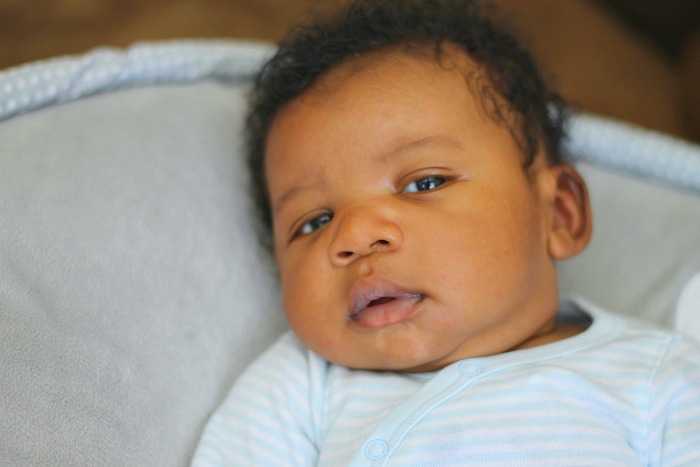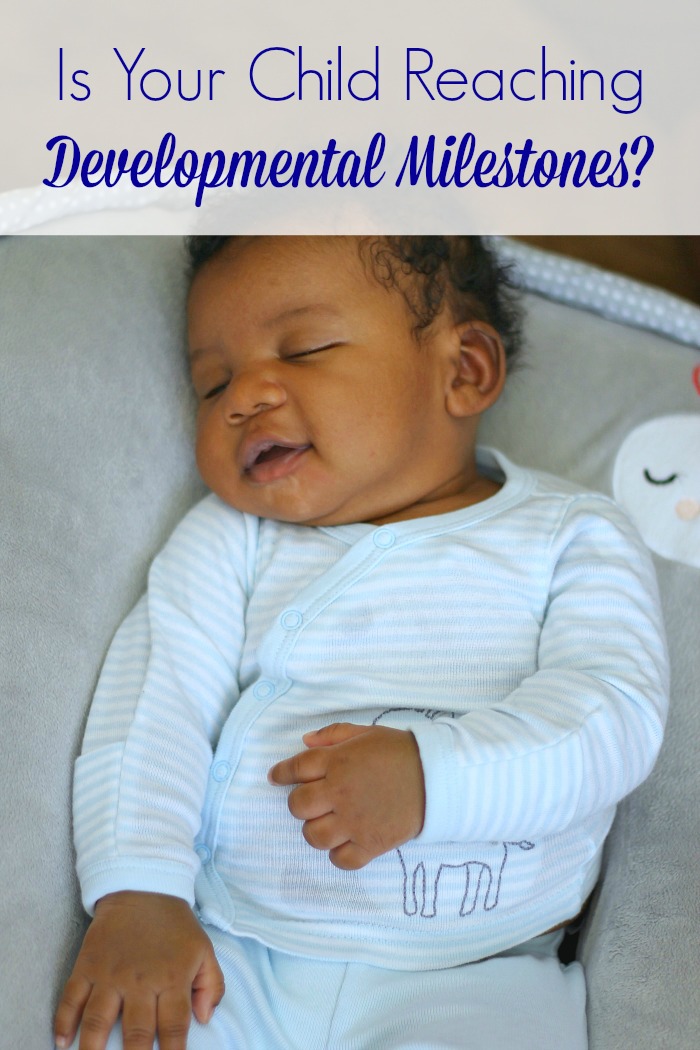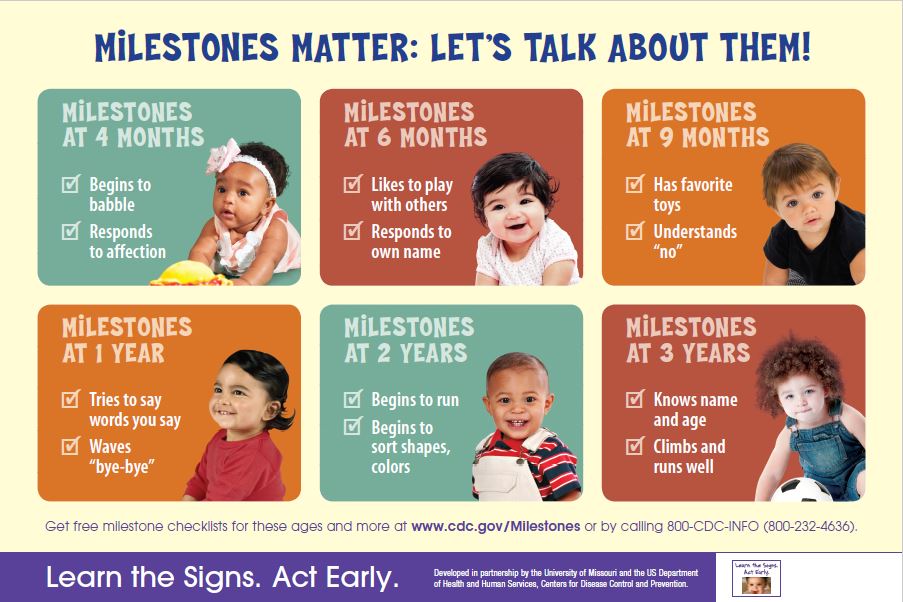This post is made possible with support from the Association of University Centers on Disabilities through a cooperative agreement with the Centers for Disease Control and Prevention’s “Learn the Signs. Act Early.” program. All opinions are my own.

In the five glorious weeks since we brought our son Jamie home from the hospital, I’ve worried more than I have in a really long time. My daughter is eight, so it’s been awhile since I took care of a tiny baby. I completely forgot how stressful it is mentally to have a newborn.
Is the baby breathing?
Why is he crying?
Should his poop be that color?
Is he comfortable?
Did you check on the baby?
I was even concerned that the baby was sleeping too much! Not only did I call the after-hours nurse line for the hospital, but I also asked our pediatrician whether he thought I should be worried. The doctor said no (all four times I asked him), and assured me that Baby Jamie was right on track with his newborn sleeping pattern.
Just a few weeks later, and the doctor was right. Sure, Jamie still sleeps a lot, but his awake hours are much more eventful. Instead of being awake just long enough to poop, eat, and cry, he’s starting to spread some baby love in the form of gummy smiles, cooing, and deep, focused looks. He doesn’t cry as much as he used to when we first brought him home. He doesn’t mind getting his diaper changed so much anymore, and he’s latching on for breastfeeding on the first try. Our baby boy is growing up! While I’m still worrying a lot, it’s not quite as much as I was when we first brought him home.

Now that Jamie is just about out of the newborn phase, we’re really taking note to make sure he’s hitting milestones. You know how I was concerned that he was sleeping too much because I just wasn’t sure? Well, milestones help me track Jamie’s development with certainty. They encourage early detection of potential developmental challenges, and will help me to get support sooner if there is an issue.
Jamie is already starting to hit some of the milestones that we should be looking out for by the time he reaches 2 month of age. He’s smiling, calming himself by sucking on his fingers, looking at Terrence, Ayva, and me, cooing as if he’s trying to talk, and more. We’re in baby milestone heaven over here! With every new skill he exhibits, we fall even more in love with him (and I had no clue that was even possible).
One of the most respected and useful resources for parents is the Centers for Disease Control and Prevention’s “Learn the Signs. Act Early.” program. This program provides comprehensive information about milestones from birth to age 5, tools to help you determine what the milestones actually look like, and other great support materials for parents and caregivers.
It’s normal to worry a lot as a parent of a baby. I don’t feel bad that I ask our pediatrician the same question over and over again. I have no shame about the number of times I consult Google each day about a concern that I have, the amount of books I check out from the library about baby development, or the texts I send to family and friends with my concerns as I look for reassurance. My job is to take care of this little guy. That means making sure he has everything that he needs to grow and develop properly, or the resources to support him if he doesn’t. Keeping track of milestones is a much more effective and proactive approach to parenting than worrying. I can’t promise that I won’t keep bugging my pediatrician with questions about Jamie’s development, but these tools are definitely a huge help, and I’m glad to have access to them!
Want to know if your baby is meeting their age appropriate milestones? Find out more on the CDC’s “Learn the Signs. Act Early.” site.

Awww. I remember the day my son who is now two was born like it’s yesterday. As a young mom,I use to worry about my son alot. I would not let him out of my sight for long. I use to read up ever so often about his developmental milestones. I can’t wait to have my second child so I can do it all over again. An intestine read.
http://motherhood-chaoticallybeautiful.com/confessions-of-a-working-mom-part-1-of-2-the-weekend-mom/